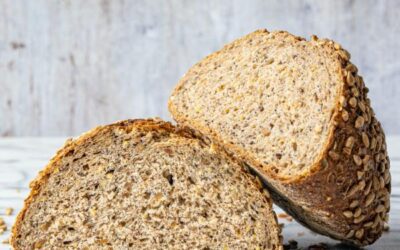Like many cooks, I was a baker first–cookies, cakes, and eventually breads. Even as baking gave way to cooking, I still baked a lot of bread–not the artisanal types prevalent now, but multigrains, ryes, French walnut, and Italian rolls.
Gradually, though, as bread better than I made became easier to find, I put my time to other uses. Though I still have a shelf of bread and pastry cookbooks, I now tend to stir up only quick, no-effort brownies, panna cottas, and fruit crisps and buy my loaves.
But recently the new cookbook by Zingerman’s Bakehouse led me back to baking. An engaging, open-door peek at the bakery by its managing partners, Amy Emberling and Frank Carollo, it’s a history and cookbook in one. There’s a long, very complete section titled “Setting the Stage for Successful Baking” with thorough notes on ingredients, equipment, and techniques. But instead of the typical “Breads,” “Cookies,” “Pies,” and “Cakes,” the chapters that follow have titles like “Getting Started and Creating Our Mission” and “Unexpected Successes, Surprising Controversies, and Stunning Flops.” A couple of pages at the beginning of each chapter illuminate the title, and the recipes illustrate the narrative. Introductions to each recipe add additional color to the stories or give us the history behind the creations.
The book doesn’t have every recipe ever made at the Bakehouse–wasn’t there a fennel and golden raisin loaf that disappeared early on?–but it does have most of the favorites, ranging from the easy-as-pie (pun intended) skill level to the oh-no-that’s-much-too-hard that will challenge more experienced bakers. Many of the breads, particularly, need stretches of a day or two to finish, but the actual labor may not be time-consuming or hard. In all cases, Emberling and Carollo’s recipes are clearly written and detailed, with hints and suggestions for what to look out for and outcomes preferred.
But the proof of any cookbook is in the pudding. Thumbing through the book, I knew I needed dinner, so I headed to the recipe for thin-crust pizza. As it worked out, we ate pizza the next night, because the dough needed to ferment and rest in the fridge overnight, but it proved well worth the wait. Though just a basic mixture of flour, water, salt, and a bit of yeast, the crust was incredibly flavorful and nicely chewy, confirmation of the effectiveness of the fermentation period.
And we had another pie for dessert. I’ve bid on Bakehouse chocolate chess pies at more than one raffle but never won. The filling couldn’t be easier–eggs, sugar, melted butter, vanilla, and, in this case, melted chocolate whisked together–but what was really interesting was their recommended technique for making the crust. “Schmearing,” a kind of rubbing and smearing of the rough dough across the counter, produced an exemplary result–flaky, tender, and delicious. Each step is explained in easy, straightforward language, along with the reasons behind the instructions, and the goal of each point in the recipe. This is a recipe for a beginner or an experienced baker who can skim the numbered steps as necessary. I look forward to following similarly detailed instructions when I try the recipe for Paesano bread, my favorite Bakehouse loaf.
This is a cookbook, then, that won’t just sit on my kitchen shelf. And with the holidays around the corner, here is a perfect gift for anyone you know who loves a success story, who loves to bake, and/or loves to eat Zingerman’s Bakehouse treats.



